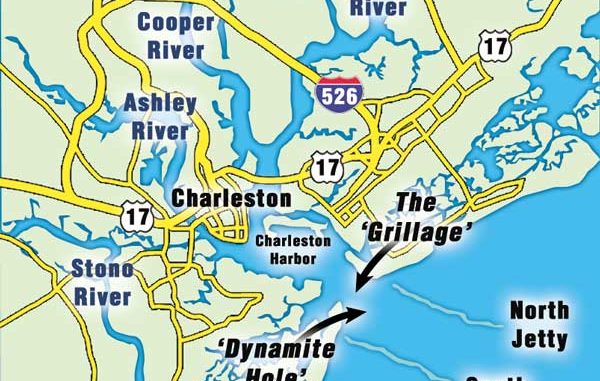
Charleston anglers herald the return of menhaden as the kickoff of speckled trout action.
Lots of people keep calendars on their desks or somewhere on a wall — maybe held to the side of the refrigerator by a magnet.
Some operate using a different kind of calendar. They mark time by events: when the dogwoods bloom, it’s time to go crappie fishing; when the leaves turn colors, deer season is upon us.
Rick Hiott of Reel Fish Head Charters takes it a step further. Spring may arrive on March 20. The dogwoods may bloom shortly thereafter. The NCAA Final Four is around the first of April. But, Hiott admits, his fishing calendar doesn’t start until an oily little fish shows up in Charleston Harbor.
“I don’t get excited in the spring until the menhaden show up — usually around the first of May,” he said. “I’ve never watched the water temperature, so it’s hard to say when they come in — maybe at 67 or 68 degrees?”
When the water warms enough, schools of literally tens of thousands of menhaden ease into inlets up and down the South Carolina coast. Their arrival may be cheered by fishermen, but it’s welcomed even more by inshore gamefish — speckled trout, to be specific. Specks have spent the winter in deep holes in creeks and waterways off the harbor, looking for the warmest water they can find. There’s not really much around to eat for several months, so when menhaden ring the dinner bell around the end of April, they act like a bunch of 300-pound football players looking at an all-you-can-eat buffet line.
Hiott said the menhaden usually show up in great numbers, then they seem to disappear for a week or so — maybe it’s just the first wave getting eaten by everything that swims — before showing back up.
Whatever is happening, the trout fishing takes off like an F-16, and Hiott and other inshore guides like Legre Leland are ready, spinning rods in hand, to take advantage of it.
“The trout are here all the time — they’re just waiting for the water temperature to warm up,” said Leland, of Head Shaker Charters. “I correlate the big trout beginning to bite with the baby menhaden showing up around the beginning of May. They’ll be all over the harbor, along the barrier islands, up the Wando (river).
“When the menhaden show up, you’ll stop anywhere and fish around if you see the bait.”
Hungry, specks will gang up in nice-sized schools and follow bait as it roams around the harbor. They’ll set up in spots where they can ambush the menhaden whenever a school passes. They don’t reach the frenzied stage of bluefish, but a half-dozen big specks can make quick work of a hundred-fish school of menhaden in short order.
Finding the ambush points is key. Hiott and Leland concentrate on the standard kind of structure that every fisherman can recognize: points, docks, rip-rapped banks, submerged rockpiles, the harbor jetties and oyster bars. “All the same stuff everybody fishes,” Leland said.
With one exception. Redfish, flounder and plenty of other species and be caught in calm water that’s barely moving. Speckled trout demand current, places where they can set up and have their meals delivered to their doorsteps. And don’t look for them in stained or roiled water.
“You want current, points with current on them, current rips,” Hiott said. “And you want to fish the cleanest water you can find in the harbor.”
Hiott and Leland concentrate on the 2-hour period on either side of high tide: the last two hours of the rising tide and the first two hours of the falling tide. The higher tide stage submerges most of the oyster bars and puts them in deep-enough water to give specks a place to roam. On the low end of the tide cycle, the specks might be 100 yards off the bank, in deeper channels, while redfish patrol the edges of the shells in barely enough water to cover their spotted tails.
“I try to plan my guide trips around fishing the last two hours of the rising tide and the first two hours of the falling tide,” Hiott said. “That way, you catch your trout, then when the water falls out, you get on the reds.”
Hiott also pays a lot of attention to banks that are protected with concrete rubble or rip-rap. He’s also spent time fishing the pilings on the US 17 and I-526 bridges, although he said the U.S. Coast Guard tends to be rather protective of the US 17 bridge and will keep fishermen a safe distance away. But docks hold a special place in his heart.
“I fish a lot of docks,” Hiott said. “If you can find an old dock on the outside bend of a creek that drops off real fast, that’s good. If it has some live oysters on that bank, that’s great.”
Leland said May is one of the months when fishermen have a fighting chance at catching a limit in one spot. “They should be ganged up pretty good,” he said. “If you catch one, slow down and fish that place some more.
“Another thing that fishermen have got to learn is to pattern the bait,” he said. “Trout will find and eat whatever shows up, and when something new shows up, they’ll change.”
So it’s menhaden in May, before the shrimp show back up, and before finger mullet make their appearance.
Both Leland and Hiott like to fish live bait, either on a Carolina rig or under a float. Hiott will match the size of hook he uses to the size of the baitfish, opting to go one size larger than what would appear correct.
“On a 4-inch menhaden, I’ll use a short-shank Mustad live-bait hook, anywhere from a No. 2 to a 3/0,” he said. “If I’m fishing a Carolina rig, I’ll use a 2-foot leader of 20-pound test fluorocarbon with a half-ounce above the swivel. I might go lighter, depending on the depth or the current.”
Leland loves the small menhaden, because he says it will attract a better-quality speck than shrimp or other baits.
“I love to fish a small menhaden under a float, even smaller than three or four inches if I can get them,” he said. “I’m after the bigger trout. You can go catch a lot of 13- and 14-inch trout — they’re all over. Even a 16-inch trout is maybe not even a pound. I want those 2-pound-and-up trout. They’ll eat menhaden before a smaller trout will.”
And that’s important, Hiott said, because May is a big-trout month.
“In May, we get the big ones. The little schoolies, we get them in the fall. You get numbers in the fall, bigger fish in the spring,” he said. “I like to feed ’em a real piece of meat. You can buy live shrimp at the tackle shops if you can’t get menhaden, but you’ll catch better trout on the menhaden.”
While Hiott stays away from artificial baits in the spring, Leland will go to the usual assortment of soft-plastic baits fished on leadhead jigs, but he’ll also pay attention to a topwater bite.
“Last year we were throwing Spook Jrs., and I was fishing a High Roller,” Leland said. “I try to throw it early morning and in the evening, but I know other guys who are hard-core topwater fishermen who will try and catch ’em on a topwater plug all day.”

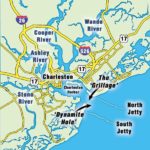
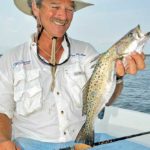
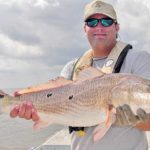
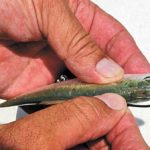
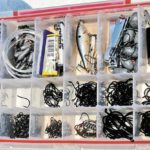



Be the first to comment